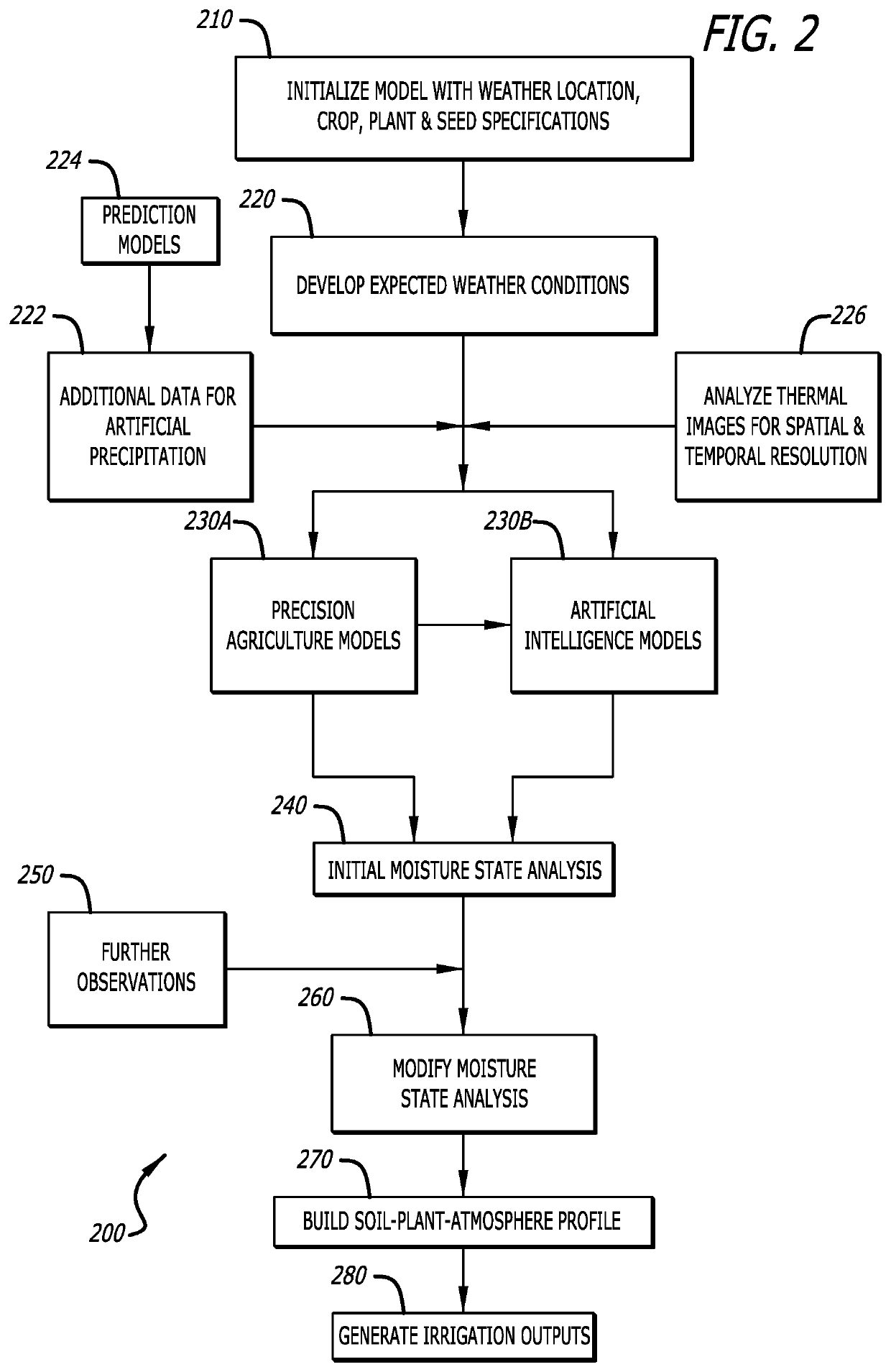Customized land surface modeling in a soil-crop system using satellite data to detect irrigation and precipitation events for decision support in precision agriculture
a technology for crop systems and satellite data, applied in the field of precision agriculture, can solve the problems of crop production not being possible, plant death, and slow metabolic functions and growth and/or flowering, and achieve the effects of minimizing water loss, improving model accuracy, and improving simulation of moisture conditions in fields and associated impact on quantity and distribution
- Summary
- Abstract
- Description
- Claims
- Application Information
AI Technical Summary
Benefits of technology
Problems solved by technology
Method used
Image
Examples
Embodiment Construction
[0041]In the following description of the present invention, reference is made to the exemplary embodiments illustrating the principles of the present invention and how it is practiced. Other embodiments will be utilized to practice the present invention and structural and functional changes will be made thereto without departing from the scope of the present invention.
[0042]The present invention is, in one aspect thereof, an irrigation modeling framework 100 performed in one or more systems and methods that simulate, as noted above, a soil-plant-atmosphere system as it relates to moisture available to a crop and associated fields and soils, and generate one or more outputs to aid users in managing irrigation activities in precision agriculture. The soil-plant-atmosphere system is simulated in a customized land surface model, comprised of one or more coupled crop and soil simulation models of one or more physical and empirical characteristics impacting various aspects of a moisture ...
PUM
 Login to View More
Login to View More Abstract
Description
Claims
Application Information
 Login to View More
Login to View More - R&D
- Intellectual Property
- Life Sciences
- Materials
- Tech Scout
- Unparalleled Data Quality
- Higher Quality Content
- 60% Fewer Hallucinations
Browse by: Latest US Patents, China's latest patents, Technical Efficacy Thesaurus, Application Domain, Technology Topic, Popular Technical Reports.
© 2025 PatSnap. All rights reserved.Legal|Privacy policy|Modern Slavery Act Transparency Statement|Sitemap|About US| Contact US: help@patsnap.com


